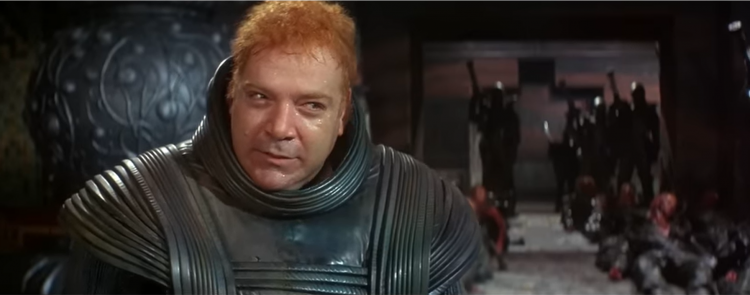The Denis Villeneuve adaptation of Dune is not the first adaptation of the books; interestingly, there was a 1984 film that failed both commercially and critically. The film was so bad that its director David Lynch refused to be associated with the film. However, the 1984 failure, was not the first adaptation attempt of Dune. In 1974, work had begun to create the film with Chilean-French director Alejandro Jodorowsky, but it quickly came to light that Jodorowsky had very wild plans for what would be the first ever Dune movie.
Jodorowsky’s film was set to be released nearly 10 years before Lynch’s Dune but while the film was still in development, plans had to be stalled. This was mostly for financial reasons. Jodorowsky’s vision for the first ever Dune film was one that was very extravagant in all aspects of the film from its production to the cast to the salaries and even the music. The 2014 documentary Jodorowsky’s Dune, extensively covers Alejandro Jodorowsky’s failed attempt at the adaptation.
Alejandro Jodorowsky’s Dune Set Out to Achieve the Impossible

The first thing that was wrong with Alejandro Jodorowsky’s Dune attempt was the length of the film. The director had set out to create a 10-14 hour film and he refused to budge on this decision. The expected length of the film was set at 2 hours but for Jodorowsky, he felt that his timeframe would allow for a much better adaptation of the film. This impossible feat was one of the film’s first failings.
Then there was the question of salaries, Salvador Dali who was cast to play the film’s villain Emperor Shaddam IV, had a tricky request. Dali had asked for $100,000 per every hour where he had to play the character. The actor was gunning for the position of the highest-paid actor in Hollywood. This led to Jodorowsky amending the script and film’s footage so that all of Dali’s scenes were shot within one hour. To make up for this, a robot made after Dali’s image would say the rest of his lines for the rest of the film where Dali the actor would be absent. Dali agreed to this only on the most bizarre of conditions.
The Cast for the Movie Featured Some Big and Unexpected Names

One of the most intriguing aspects of the first ever Dune movie was its star-studded and eclectic cast, which included some of the biggest and most unexpected names in Hollywood. Jodorowsky, who had already made a name for himself as a cult filmmaker with El Topo and The Holy Mountain, was determined to assemble a team of creative and daring collaborators from various industries and backgrounds. Salvador Dali, Mick Jagger, Orson Welles, and David Carradine, were some of the people he hoped to cast in the film and even his own son, Brontis Jodorowsky who was supposed to play Paul Atreides. Each of the actors was meant to play a specific role in Jodorowsky’s grand vision of Dune, which involved a fusion of science fiction, spiritualism, and psychedelic imagery.
Despite the impressive and diverse cast, the production of Dune faced challenges and setbacks that prevented it from being realized. Some actors dropped out due to scheduling conflicts or artistic disagreements, while others were deemed too expensive or too famous for the movie’s budget. As was already stated, Salvador Dali’s staggering fee and a custom-designed throne, were costs Jodorowsky couldn’t afford. The proposed cast for the first-ever Dune film was a fascinating example of the possibilities that Jodorowsky had set out to achieve with the film.
The Unmade Dune Is the Source Material for Many Sci-Fi Films

Before the curtains were closed on Alejandro Jodorowsky’s Dune, the storyboards, concept art and script were sent to different studios but because of the film’s length, none of the studios were willing to pick it up. In spite of this what was to be the first ever Dune movie remains a hugely influential work in science fiction. Its ambitious and far-reaching vision, which involved a melding of science, spirituality, and surrealism, was years ahead of its time and influenced many popular and acclaimed films that followed. In particular, the visual aesthetic and conceptual design of Dune has reverberated in science fiction classics such as Blade Runner and Star Wars.
The legacy of Alejandro Jodorowsky’s Dune can be seen in the bold and imaginative ways in which other filmmakers have tried to translate science fiction into a cinematic language that is both immersive and thought-provoking. The designs of the spaceships, costumes, and creatures in Dune have inspired generations of artists and fans to explore the possibilities of world-building and set design, while the themes of ecology, politics, and spirituality have provided a template for science fiction that goes beyond the usual tropes of action and technology, it can also be credited with paving the way for Villeneuve’s Dune.
 Follow Us
Follow Us




